
Investor Presentation 2025 First Quarter
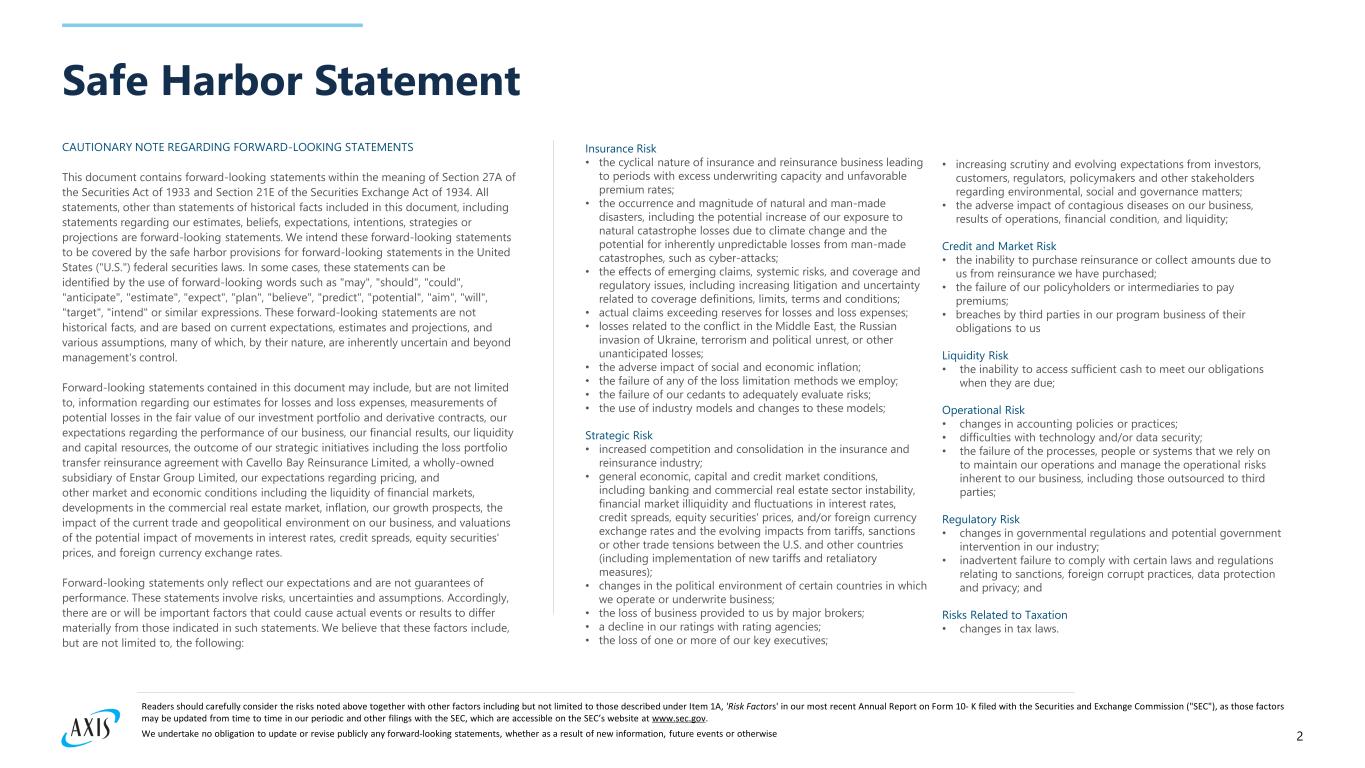
2 Safe Harbor Statement CAUTIONARY NOTE REGARDING FORWARD-LOOKING STATEMENTS This document contains forward-looking statements within the meaning of Section 27A of the Securities Act of 1933 and Section 21E of the Securities Exchange Act of 1934. All statements, other than statements of historical facts included in this document, including statements regarding our estimates, beliefs, expectations, intentions, strategies or projections are forward-looking statements. We intend these forward-looking statements to be covered by the safe harbor provisions for forward-looking statements in the United States ("U.S.") federal securities laws. In some cases, these statements can be identified by the use of forward-looking words such as "may", "should", "could", "anticipate", "estimate", "expect", "plan", "believe", "predict", "potential", "aim", "will", "target", "intend" or similar expressions. These forward-looking statements are not historical facts, and are based on current expectations, estimates and projections, and various assumptions, many of which, by their nature, are inherently uncertain and beyond management's control. Forward-looking statements contained in this document may include, but are not limited to, information regarding our estimates for losses and loss expenses, measurements of potential losses in the fair value of our investment portfolio and derivative contracts, our expectations regarding the performance of our business, our financial results, our liquidity and capital resources, the outcome of our strategic initiatives including the loss portfolio transfer reinsurance agreement with Cavello Bay Reinsurance Limited, a wholly-owned subsidiary of Enstar Group Limited, our expectations regarding pricing, and other market and economic conditions including the liquidity of financial markets, developments in the commercial real estate market, inflation, our growth prospects, the impact of the current trade and geopolitical environment on our business, and valuations of the potential impact of movements in interest rates, credit spreads, equity securities' prices, and foreign currency exchange rates. Forward-looking statements only reflect our expectations and are not guarantees of performance. These statements involve risks, uncertainties and assumptions. Accordingly, there are or will be important factors that could cause actual events or results to differ materially from those indicated in such statements. We believe that these factors include, but are not limited to, the following: Insurance Risk • the cyclical nature of insurance and reinsurance business leading to periods with excess underwriting capacity and unfavorable premium rates; • the occurrence and magnitude of natural and man-made disasters, including the potential increase of our exposure to natural catastrophe losses due to climate change and the potential for inherently unpredictable losses from man-made catastrophes, such as cyber-attacks; • the effects of emerging claims, systemic risks, and coverage and regulatory issues, including increasing litigation and uncertainty related to coverage definitions, limits, terms and conditions; • actual claims exceeding reserves for losses and loss expenses; • losses related to the conflict in the Middle East, the Russian invasion of Ukraine, terrorism and political unrest, or other unanticipated losses; • the adverse impact of social and economic inflation; • the failure of any of the loss limitation methods we employ; • the failure of our cedants to adequately evaluate risks; • the use of industry models and changes to these models; Strategic Risk • increased competition and consolidation in the insurance and reinsurance industry; • general economic, capital and credit market conditions, including banking and commercial real estate sector instability, financial market illiquidity and fluctuations in interest rates, credit spreads, equity securities' prices, and/or foreign currency exchange rates and the evolving impacts from tariffs, sanctions or other trade tensions between the U.S. and other countries (including implementation of new tariffs and retaliatory measures); • changes in the political environment of certain countries in which we operate or underwrite business; • the loss of business provided to us by major brokers; • a decline in our ratings with rating agencies; • the loss of one or more of our key executives; • increasing scrutiny and evolving expectations from investors, customers, regulators, policymakers and other stakeholders regarding environmental, social and governance matters; • the adverse impact of contagious diseases on our business, results of operations, financial condition, and liquidity; Credit and Market Risk • the inability to purchase reinsurance or collect amounts due to us from reinsurance we have purchased; • the failure of our policyholders or intermediaries to pay premiums; • breaches by third parties in our program business of their obligations to us Liquidity Risk • the inability to access sufficient cash to meet our obligations when they are due; Operational Risk • changes in accounting policies or practices; • difficulties with technology and/or data security; • the failure of the processes, people or systems that we rely on to maintain our operations and manage the operational risks inherent to our business, including those outsourced to third parties; Regulatory Risk • changes in governmental regulations and potential government intervention in our industry; • inadvertent failure to comply with certain laws and regulations relating to sanctions, foreign corrupt practices, data protection and privacy; and Risks Related to Taxation • changes in tax laws. Readers should carefully consider the risks noted above together with other factors including but not limited to those described under Item 1A, 'Risk Factors' in our most recent Annual Report on Form 10- K filed with the Securities and Exchange Commission ("SEC"), as those factors may be updated from time to time in our periodic and other filings with the SEC, which are accessible on the SEC’s website at www.sec.gov. We undertake no obligation to update or revise publicly any forward-looking statements, whether as a result of new information, future events or otherwise
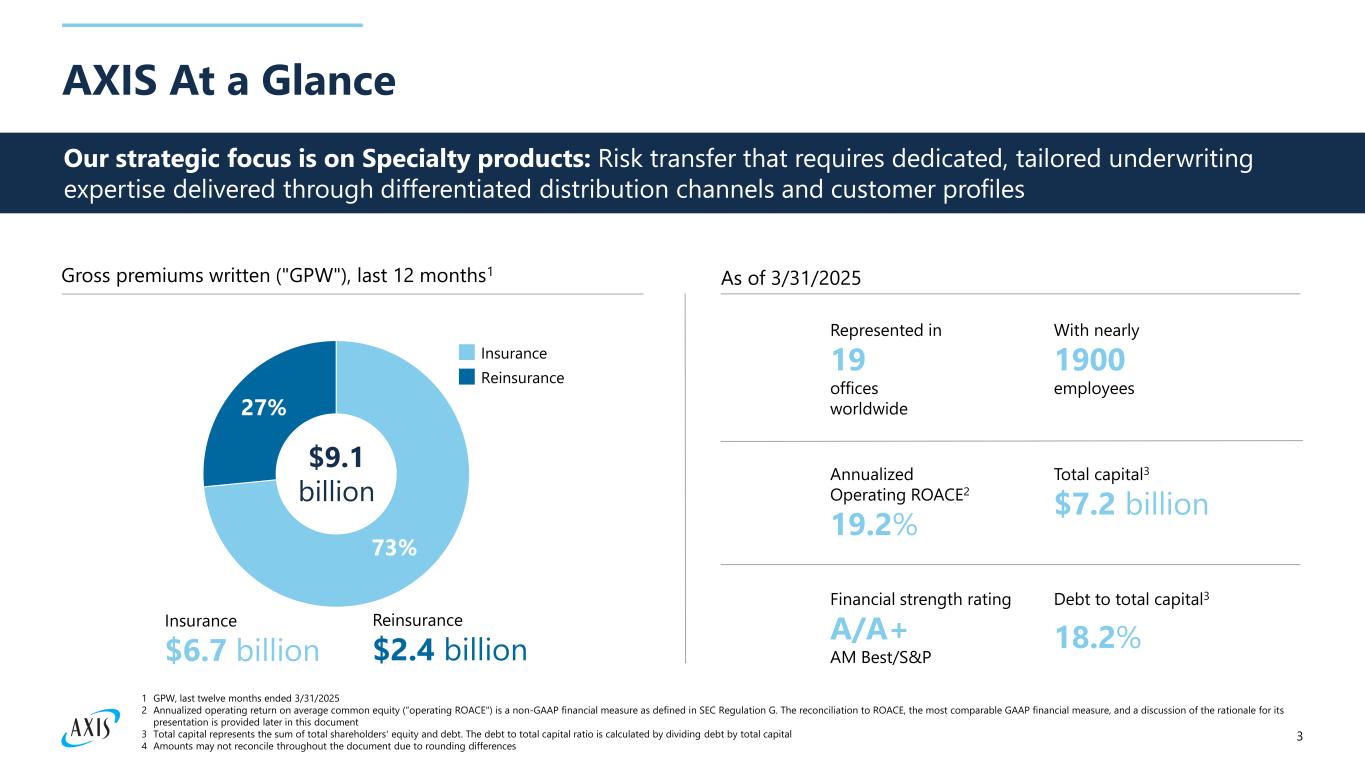
3 73% 27% AXIS At a Glance Insurance Reinsurance Annualized Operating ROACE2 19.2% Total capital3 $7.2 billion Financial strength rating A/A+ AM Best/S&P Debt to total capital3 18.2% Represented in 19 offices worldwide With nearly 1900 employees Insurance $6.7 billion Reinsurance $2.4 billion Our strategic focus is on Specialty products: Risk transfer that requires dedicated, tailored underwriting expertise delivered through differentiated distribution channels and customer profiles $9.1 billion 1 GPW, last twelve months ended 3/31/2025 2 Annualized operating return on average common equity (“operating ROACE") is a non-GAAP financial measure as defined in SEC Regulation G. The reconciliation to ROACE, the most comparable GAAP financial measure, and a discussion of the rationale for its presentation is provided later in this document 3 Total capital represents the sum of total shareholders' equity and debt. The debt to total capital ratio is calculated by dividing debt by total capital 4 Amounts may not reconcile throughout the document due to rounding differences Gross premiums written ("GPW"), last 12 months1 As of 3/31/2025
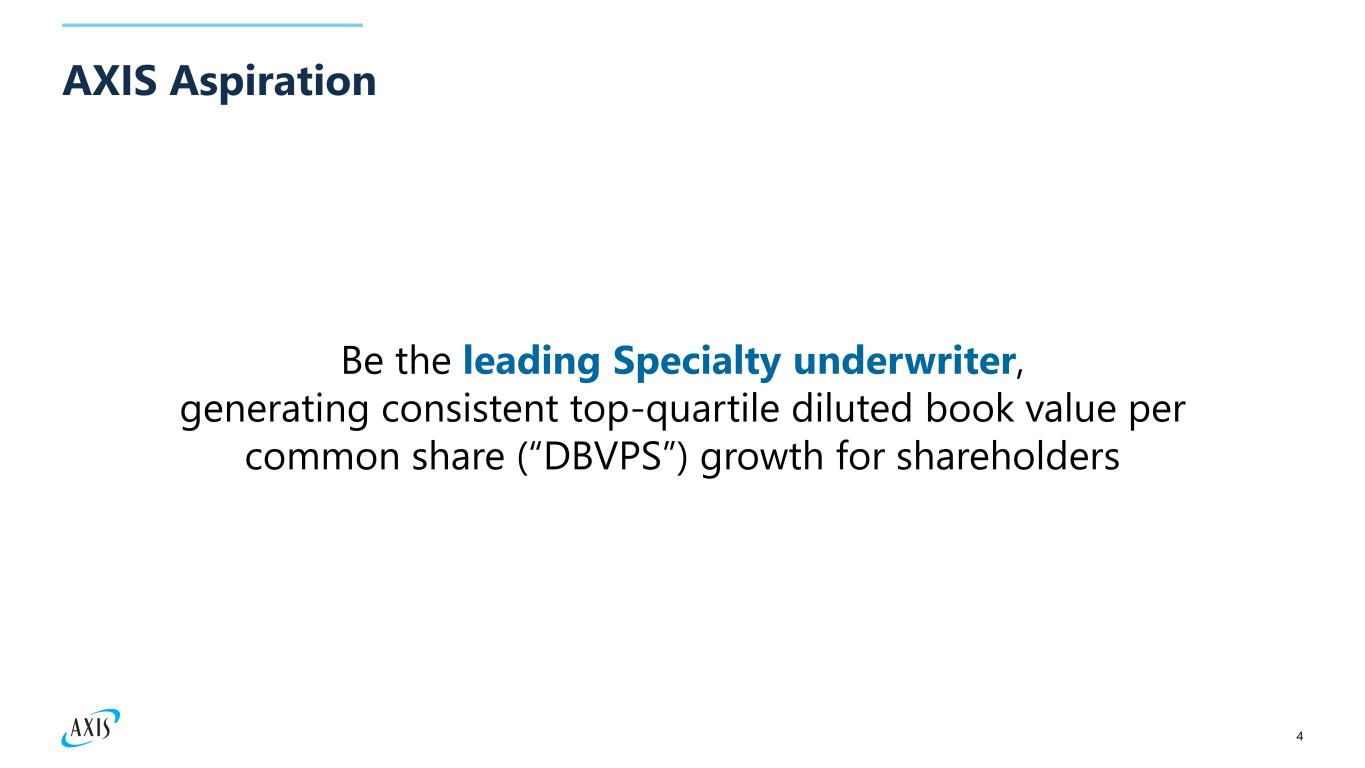
4 AXIS Aspiration Be the leading Specialty underwriter, generating consistent top-quartile diluted book value per common share (“DBVPS”) growth for shareholders
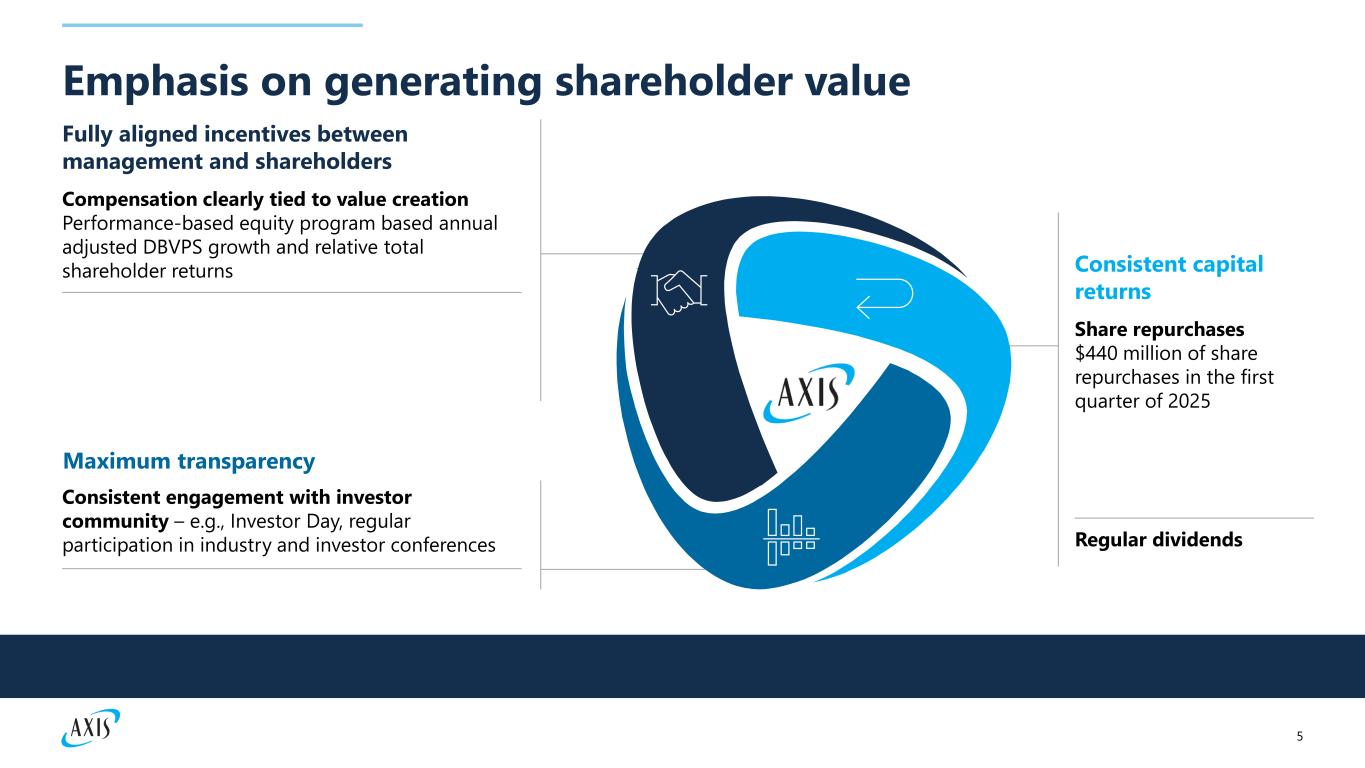
5 Emphasis on generating shareholder value Compensation clearly tied to value creation Performance-based equity program based annual adjusted DBVPS growth and relative total shareholder returns Fully aligned incentives between management and shareholders Consistent engagement with investor community – e.g., Investor Day, regular participation in industry and investor conferences Maximum transparency Share repurchases $440 million of share repurchases in the first quarter of 2025 Consistent capital returns Regular dividends
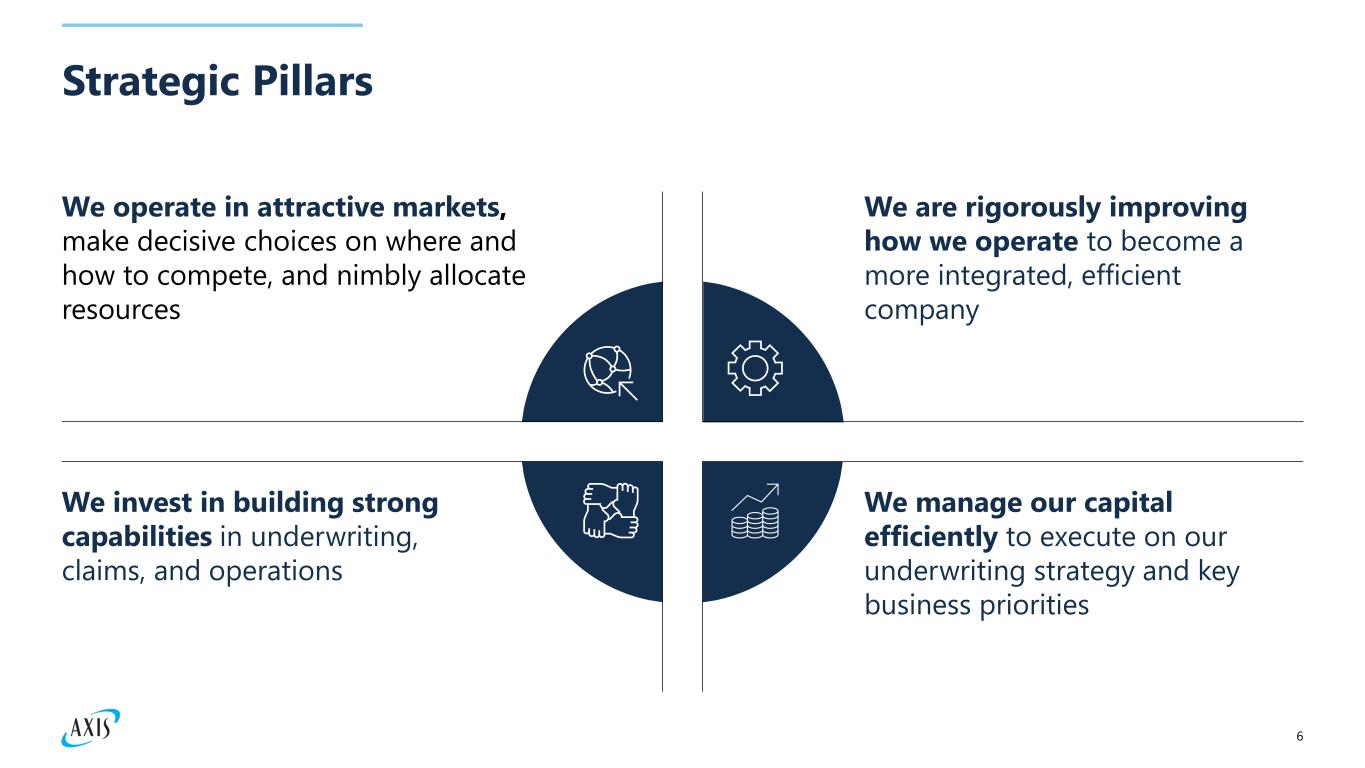
6 Strategic Pillars We operate in attractive markets, make decisive choices on where and how to compete, and nimbly allocate resources We invest in building strong capabilities in underwriting, claims, and operations We are rigorously improving how we operate to become a more integrated, efficient company We manage our capital efficiently to execute on our underwriting strategy and key business priorities

7 Broad, diverse Specialty portfolio 23% Property 21% Professional Lines Cyber2 18% Liability 10% Marine & Aviation 9%Accident & Health 9% Other3 6%Credit, Surety & Political Risk 4% $9.1 billion Product mix, GPW, last 12 months1 Insurance Reinsurance Includes business written out of North America, primarily in Excess and Surplus, and Wholesale, Financial Lines, Programs, and multiline products for the Canadian markets Also includes Global Markets, our London- based international business, which offers a diverse portfolio of Specialty products including Marine & Aviation, Property, Cyber, and Renewable Energy4 Focus on Casualty, Accident & Health, Credit & Surety, and other Specialty business Complementary and accretive to our Specialty insurance book 1 Percent of total GPW, last twelve months ended 3/31/2025 2 Includes Cyber insurance only. Cyber reinsurance is included in Professional Lines 3 Includes Agriculture reinsurance, Motor reinsurance, and Run-off lines. 4 Renewable energy is included in Property and Marine & Aviation.
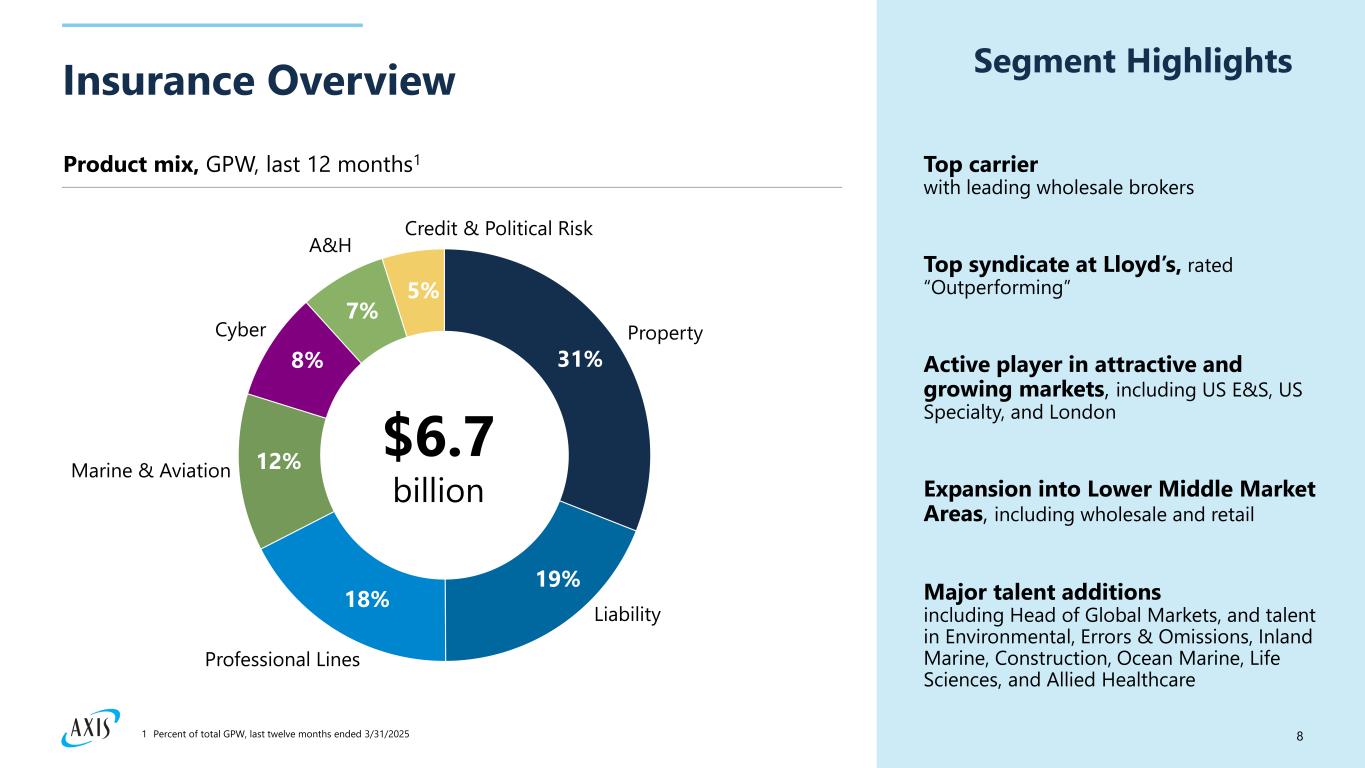
8 Insurance Overview 31% Property 19% Professional Lines Cyber 18% Liability 12%Marine & Aviation 8% Credit & Political Risk 7% A&H 5% $6.7 billion Product mix, GPW, last 12 months1 1 Percent of total GPW, last twelve months ended 3/31/2025 Top carrier with leading wholesale brokers Top syndicate at Lloyd’s, rated “Outperforming” Active player in attractive and growing markets, including US E&S, US Specialty, and London Expansion into Lower Middle Market Areas, including wholesale and retail Major talent additions including Head of Global Markets, and talent in Environmental, Errors & Omissions, Inland Marine, Construction, Ocean Marine, Life Sciences, and Allied Healthcare Segment Highlights
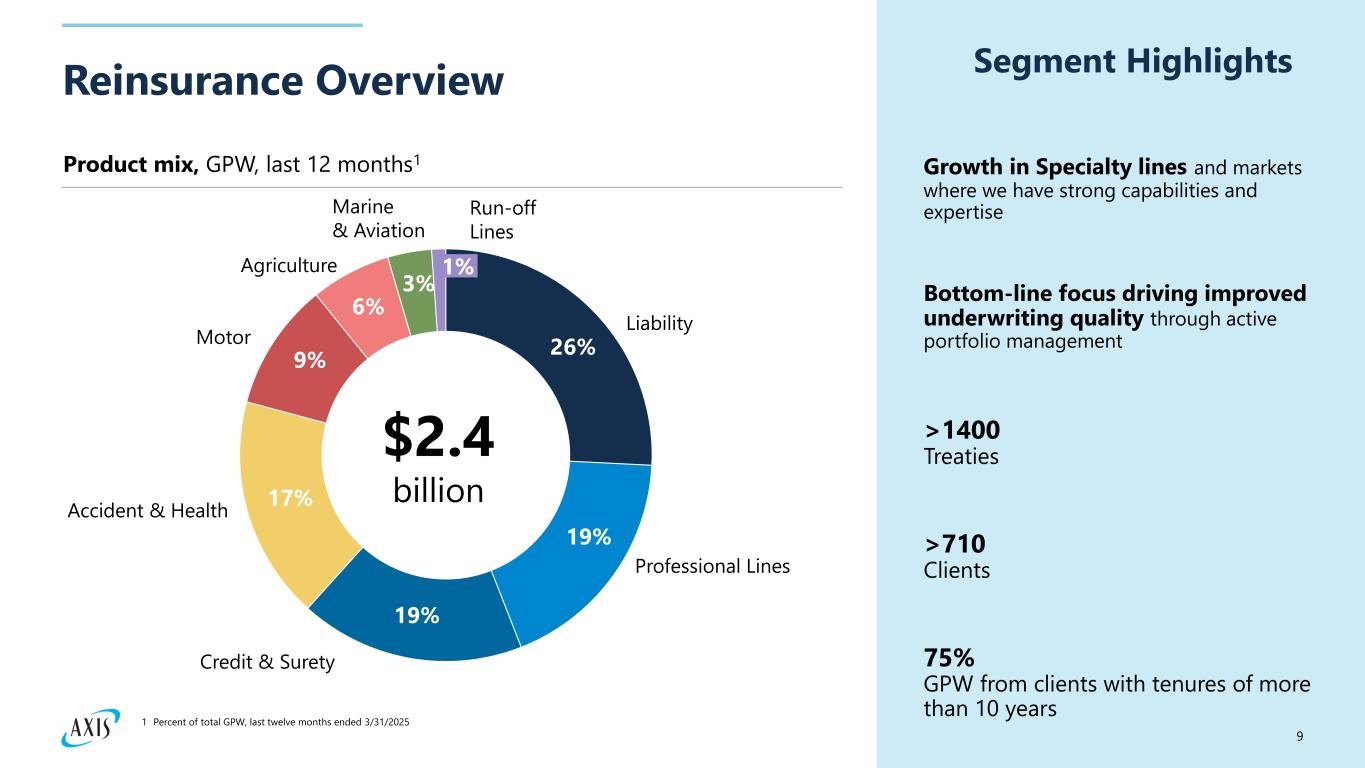
9 Reinsurance Overview 26% 19% Credit & Surety Motor 19% Liability 17% Professional Lines 9% Run-off Lines 6% Agriculture 3% $2.4 billion Product mix, GPW, last 12 months1 1 Percent of total GPW, last twelve months ended 3/31/2025 Accident & Health Marine & Aviation 1% Segment Highlights Growth in Specialty lines and markets where we have strong capabilities and expertise Bottom-line focus driving improved underwriting quality through active portfolio management >1400 Treaties >710 Clients 75% GPW from clients with tenures of more than 10 years

10 Portfolio Reshaping Gross Premiums Written Growth in Specialty Underwriting ReinsuranceInsurance First Quarter Growth Highlights ▪ Gross premiums written for the group were up 5% year over year to $2.8B for the quarter ▪ Insurance produced $1.7B in gross premiums written, a 5% increase from the prior year and highest volume first quarter for the segment ▪ Premium growth in the Insurance segment was attributable to all lines of business with the exception of cyber ▪ Reinsurance produced $1.1B in gross premiums written, a 5% increase from the prior year driven by new business in Professional Lines and Credit & Surety lines Net Premiums Earned 2021 2022 2023 2024 32% 68% 27% 73% 27% 73% 37% 63% $7.7B $8.2B $8.4B $9.0B Q1 2024 Q1 2025 41% 41% 59% 59% $2.7B $2.8B 2021 2022 2023 2024 61% 68% 74% 44% 39% 32% 26% $4.7B $5.2B $5.1B $5.3B 56% Q1 2024 Q1 2025 $1.3B $1.3B 27% 25% 73% 75%

11 18.6% 11.1% 72.3% 66.4% 66.7% 27.2% 26.6% 25.6% 57.5% 55.0% 57.6% 32.6% 32.4% 31.9% Consistent profitability Current Accident Year ("CAY") Combined ratio1 Improved underwriting performance CAY loss ratio2 Expense ratio3 Insurance Reinsurance 2022 Resulting in expanding returns Operating ROACE 1 Current accident year combined ratio is a non-GAAP financial measure as defined in SEC Regulation G. The reconciliation to combined ratio, the most comparable GAAP financial measure, and a discussion of the rationale for its presentation is provided later in this document 2 Current accident year loss ratio is a non-GAAP financial measure as defined in SEC Regulation G. The reconciliation to net losses and loss expenses ratio, the most comparable GAAP financial measure, and a discussion of the rationale for its presentation is provided later in this document 3 Expense ratio includes acquisition cost ratio and underwriting-related general and administrative ratio 2024 11.0% 2022 2024 90.1% 87.4% 89.5% 99.5% 92.3%93.0% 2023 2023 57.0% 31.1% 88.1% 68.9% 24.6% Q1 2025 93.5% 19.2% Q1 2025
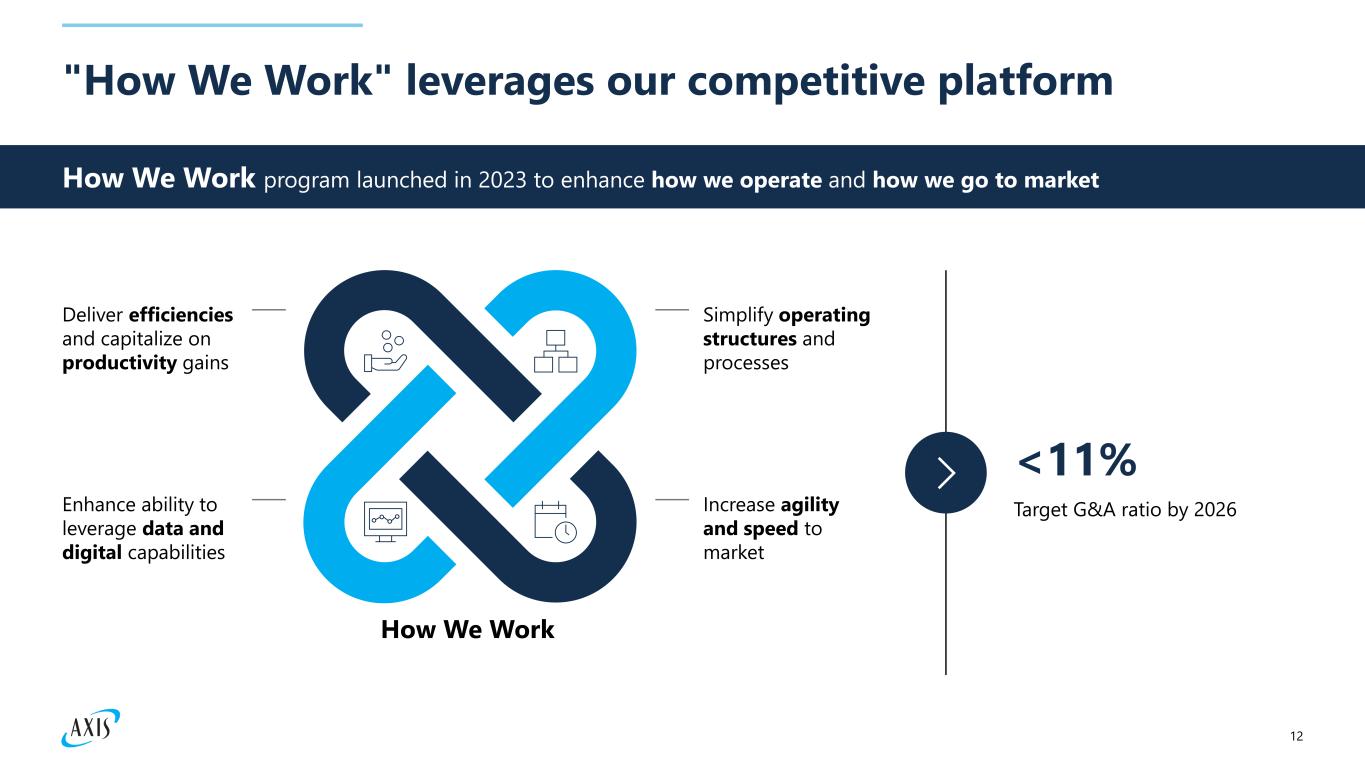
12 "How We Work" leverages our competitive platform How We Work program launched in 2023 to enhance how we operate and how we go to market <11% Target G&A ratio by 2026 Simplify operating structures and processes Increase agility and speed to market Deliver efficiencies and capitalize on productivity gains Enhance ability to leverage data and digital capabilities How We Work
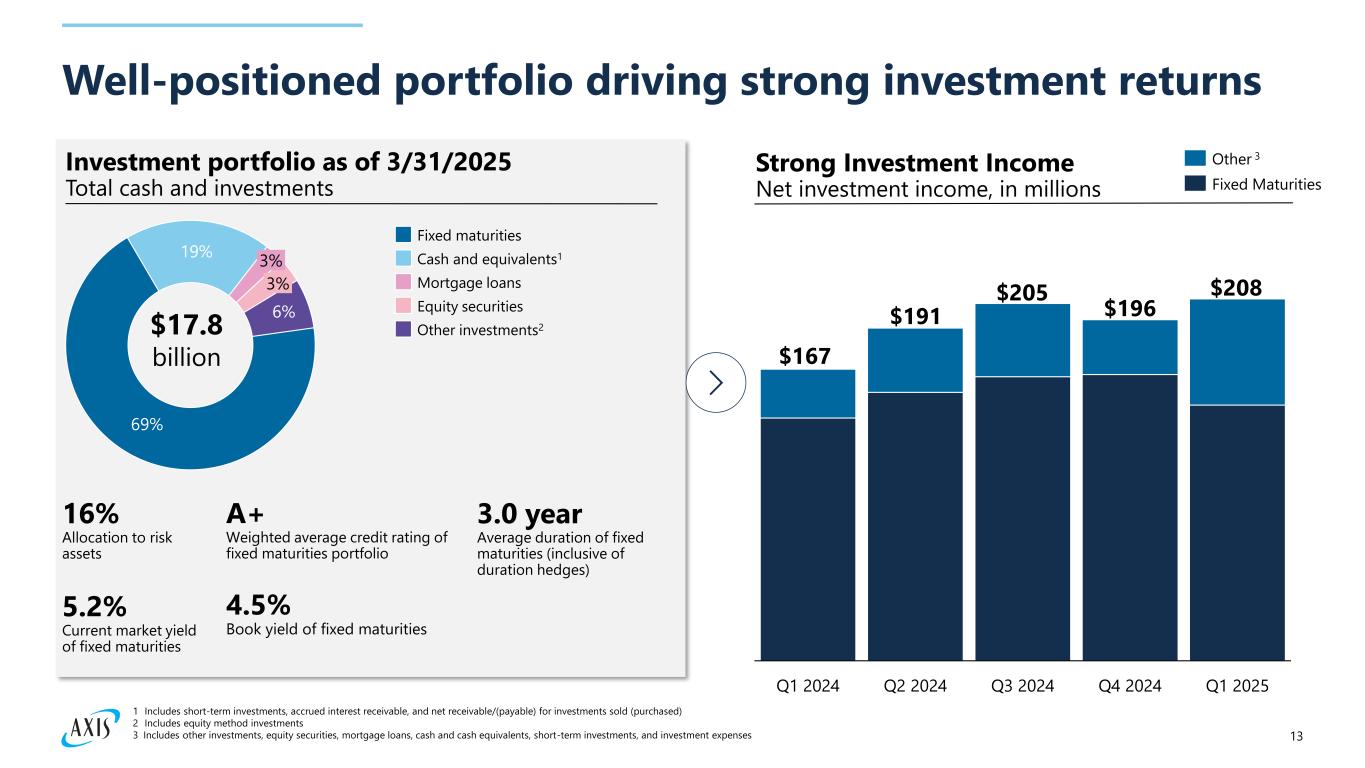
13 Q1 2024 Q2 2024 Q3 2024 Q4 2024 Q1 2025 $167 $191 $205 $196 $208 Well-positioned portfolio driving strong investment returns 69% 3% 3% Investment portfolio as of 3/31/2025 Total cash and investments $17.8 billion Fixed maturities Cash and equivalents1 Mortgage loans Equity securities Other investments2 A+ Weighted average credit rating of fixed maturities portfolio 3.0 year Average duration of fixed maturities (inclusive of duration hedges) 5.2% Current market yield of fixed maturities 4.5% Book yield of fixed maturities 16% Allocation to risk assets 1 Includes short-term investments, accrued interest receivable, and net receivable/(payable) for investments sold (purchased) 2 Includes equity method investments 3 Includes other investments, equity securities, mortgage loans, cash and cash equivalents, short-term investments, and investment expenses 19% 6% Strong Investment Income Net investment income, in millions Other 3 Fixed Maturities
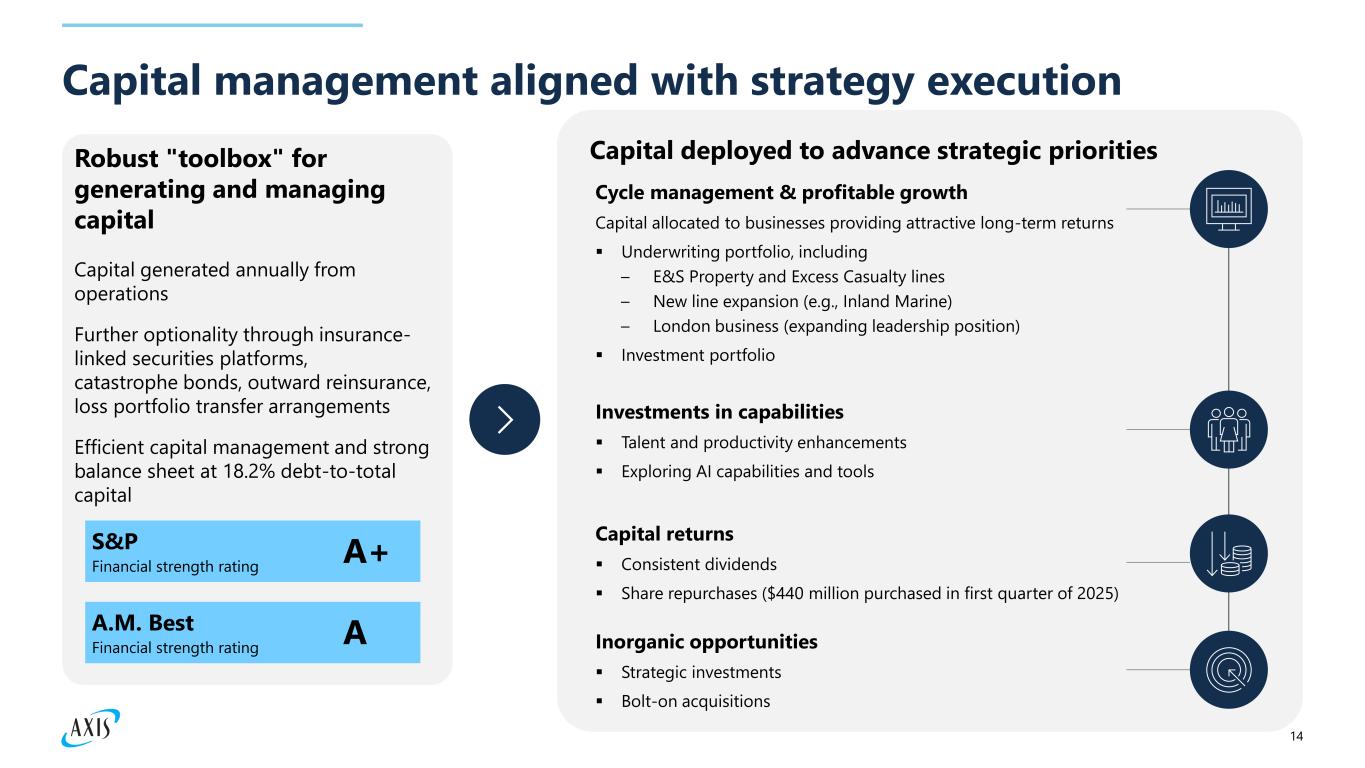
14 Capital management aligned with strategy execution Robust "toolbox" for generating and managing capital Capital generated annually from operations Further optionality through insurance- linked securities platforms, catastrophe bonds, outward reinsurance, loss portfolio transfer arrangements Efficient capital management and strong balance sheet at 18.2% debt-to-total capital S&P Financial strength rating A+ A.M. Best Financial strength rating A Capital deployed to advance strategic priorities Cycle management & profitable growth Capital allocated to businesses providing attractive long-term returns ▪ Underwriting portfolio, including – E&S Property and Excess Casualty lines – New line expansion (e.g., Inland Marine) – London business (expanding leadership position) ▪ Investment portfolio Investments in capabilities ▪ Talent and productivity enhancements ▪ Exploring AI capabilities and tools Capital returns ▪ Consistent dividends ▪ Share repurchases ($440 million purchased in first quarter of 2025) Inorganic opportunities ▪ Strategic investments ▪ Bolt-on acquisitions
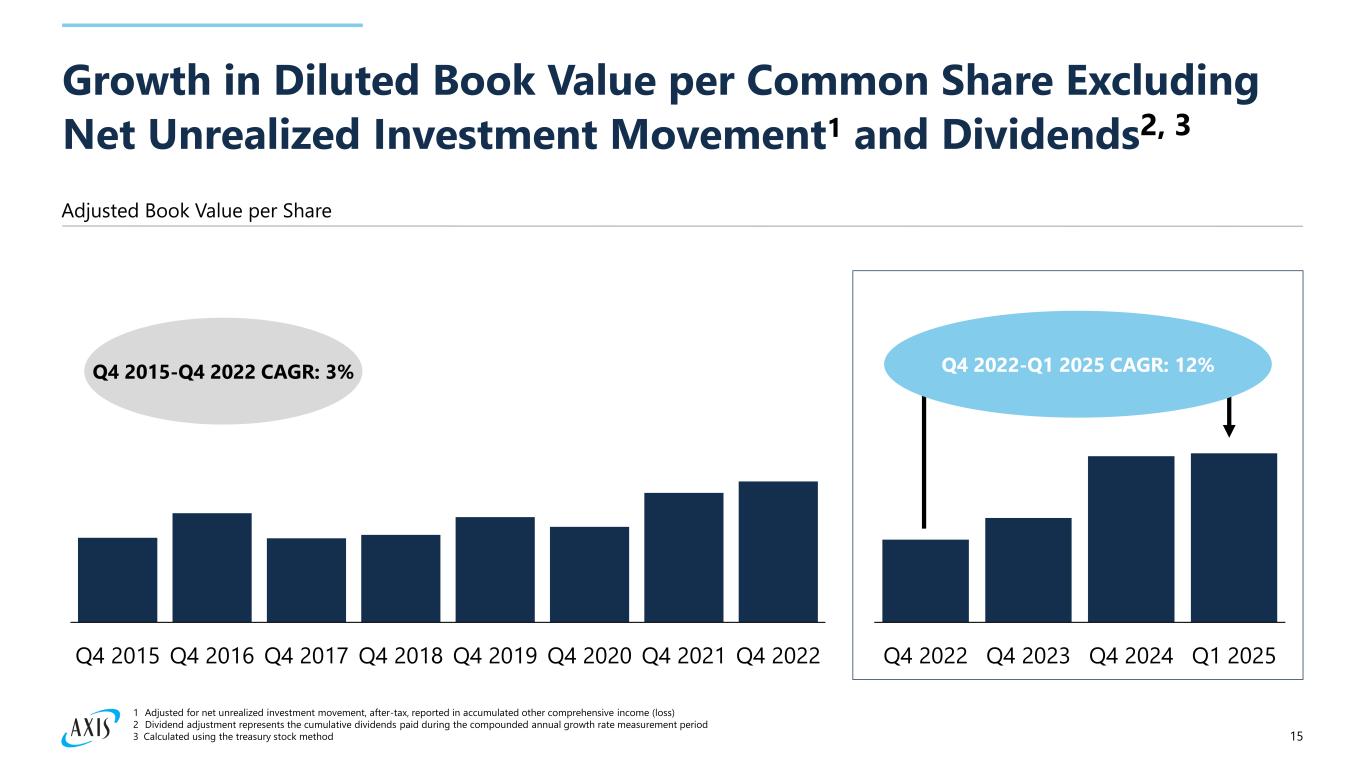
15 Q4 2022 Q4 2023 Q4 2024 Q1 2025Q4 2015 Q4 2016 Q4 2017 Q4 2018 Q4 2019 Q4 2020 Q4 2021 Q4 2022 Growth in Diluted Book Value per Common Share Excluding Net Unrealized Investment Movement1 and Dividends2, 3 Q4 2015-Q4 2022 CAGR: 3% 1 Adjusted for net unrealized investment movement, after-tax, reported in accumulated other comprehensive income (loss) 2 Dividend adjustment represents the cumulative dividends paid during the compounded annual growth rate measurement period 3 Calculated using the treasury stock method Q4 2022-Q1 2025 CAGR: 12% Adjusted Book Value per Share
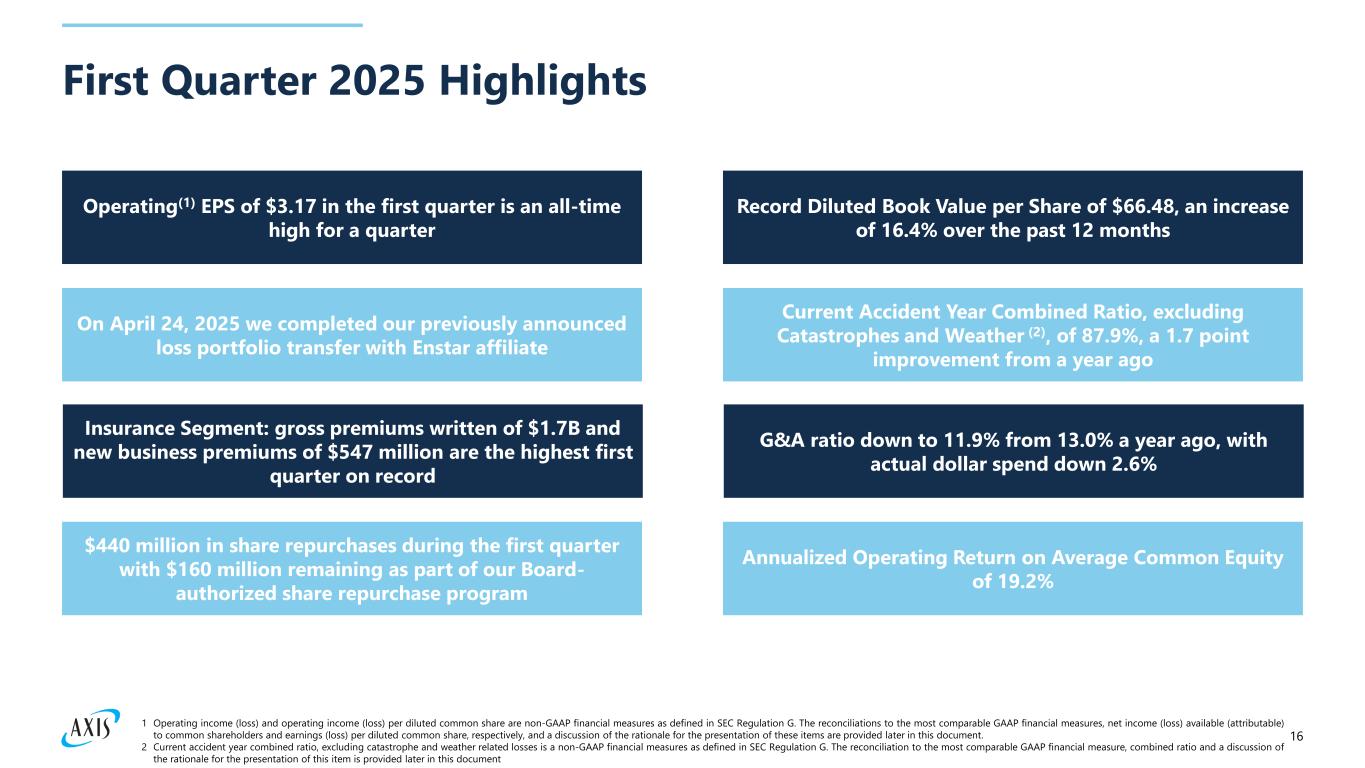
16 First Quarter 2025 Highlights Operating(1) EPS of $3.17 in the first quarter is an all-time high for a quarter On April 24, 2025 we completed our previously announced loss portfolio transfer with Enstar affiliate Insurance Segment: gross premiums written of $1.7B and new business premiums of $547 million are the highest first quarter on record $440 million in share repurchases during the first quarter with $160 million remaining as part of our Board- authorized share repurchase program Record Diluted Book Value per Share of $66.48, an increase of 16.4% over the past 12 months Current Accident Year Combined Ratio, excluding Catastrophes and Weather (2), of 87.9%, a 1.7 point improvement from a year ago G&A ratio down to 11.9% from 13.0% a year ago, with actual dollar spend down 2.6% Annualized Operating Return on Average Common Equity of 19.2% 1 Operating income (loss) and operating income (loss) per diluted common share are non-GAAP financial measures as defined in SEC Regulation G. The reconciliations to the most comparable GAAP financial measures, net income (loss) available (attributable) to common shareholders and earnings (loss) per diluted common share, respectively, and a discussion of the rationale for the presentation of these items are provided later in this document. 2 Current accident year combined ratio, excluding catastrophe and weather related losses is a non-GAAP financial measures as defined in SEC Regulation G. The reconciliation to the most comparable GAAP financial measure, combined ratio and a discussion of the rationale for the presentation of this item is provided later in this document
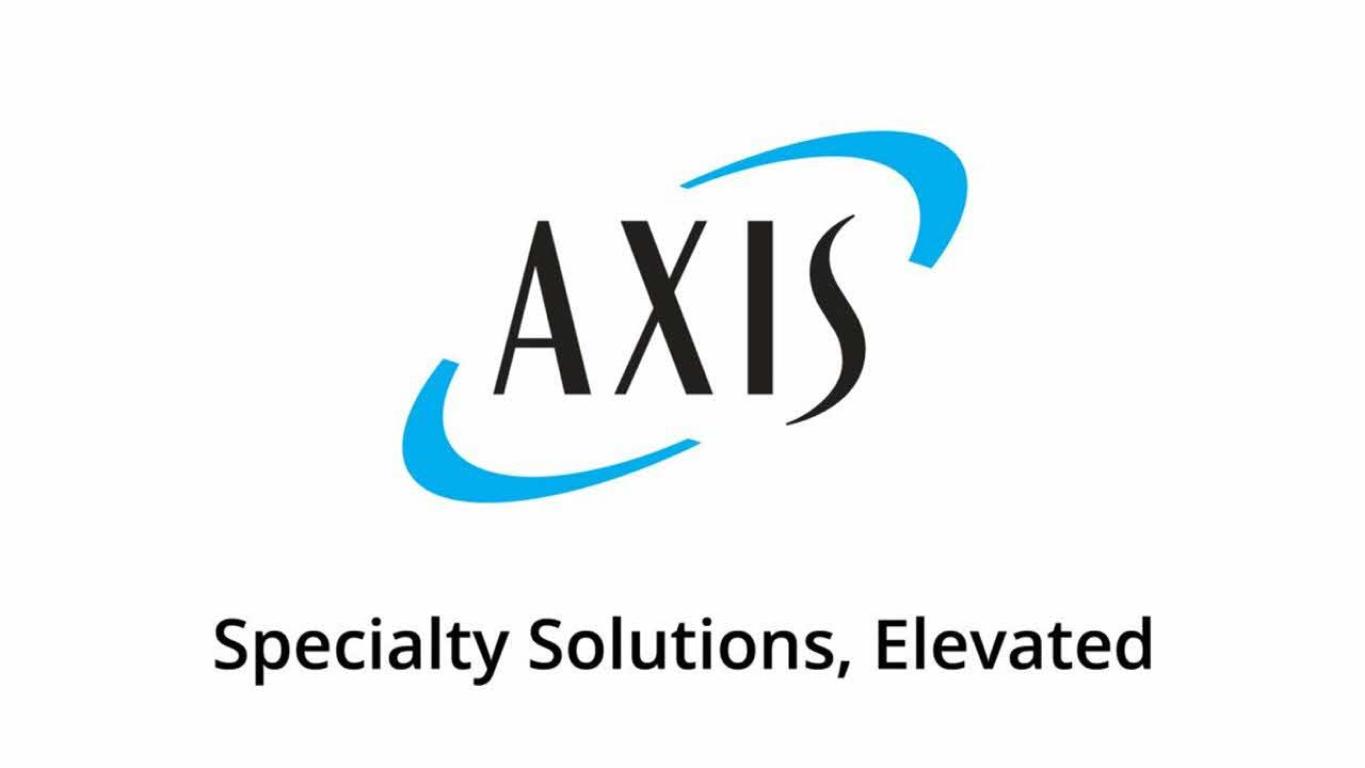
17
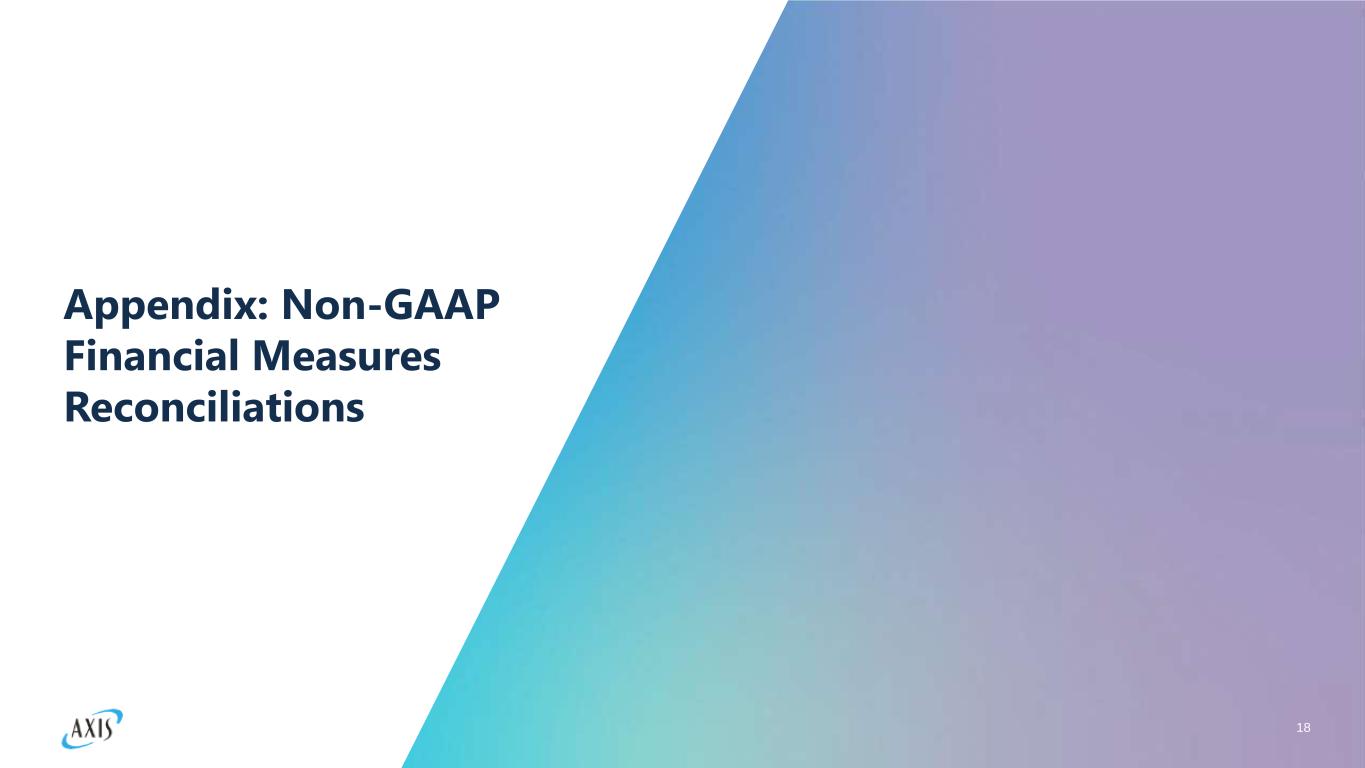
18 Appendix: Non-GAAP Financial Measures Reconciliations
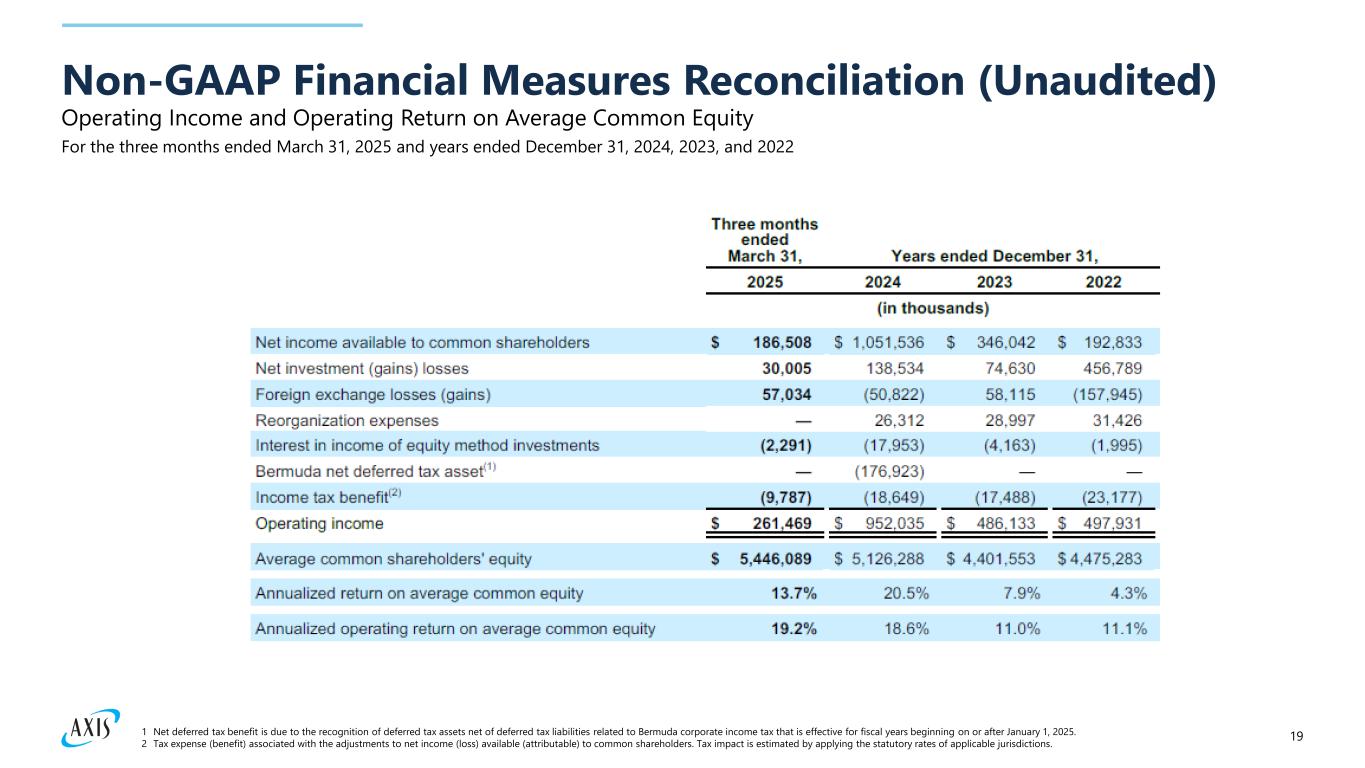
191 Net deferred tax benefit is due to the recognition of deferred tax assets net of deferred tax liabilities related to Bermuda corporate income tax that is effective for fiscal years beginning on or after January 1, 2025. 2 Tax expense (benefit) associated with the adjustments to net income (loss) available (attributable) to common shareholders. Tax impact is estimated by applying the statutory rates of applicable jurisdictions. Operating Income and Operating Return on Average Common Equity Non-GAAP Financial Measures Reconciliation (Unaudited) For the three months ended March 31, 2025 and years ended December 31, 2024, 2023, and 2022
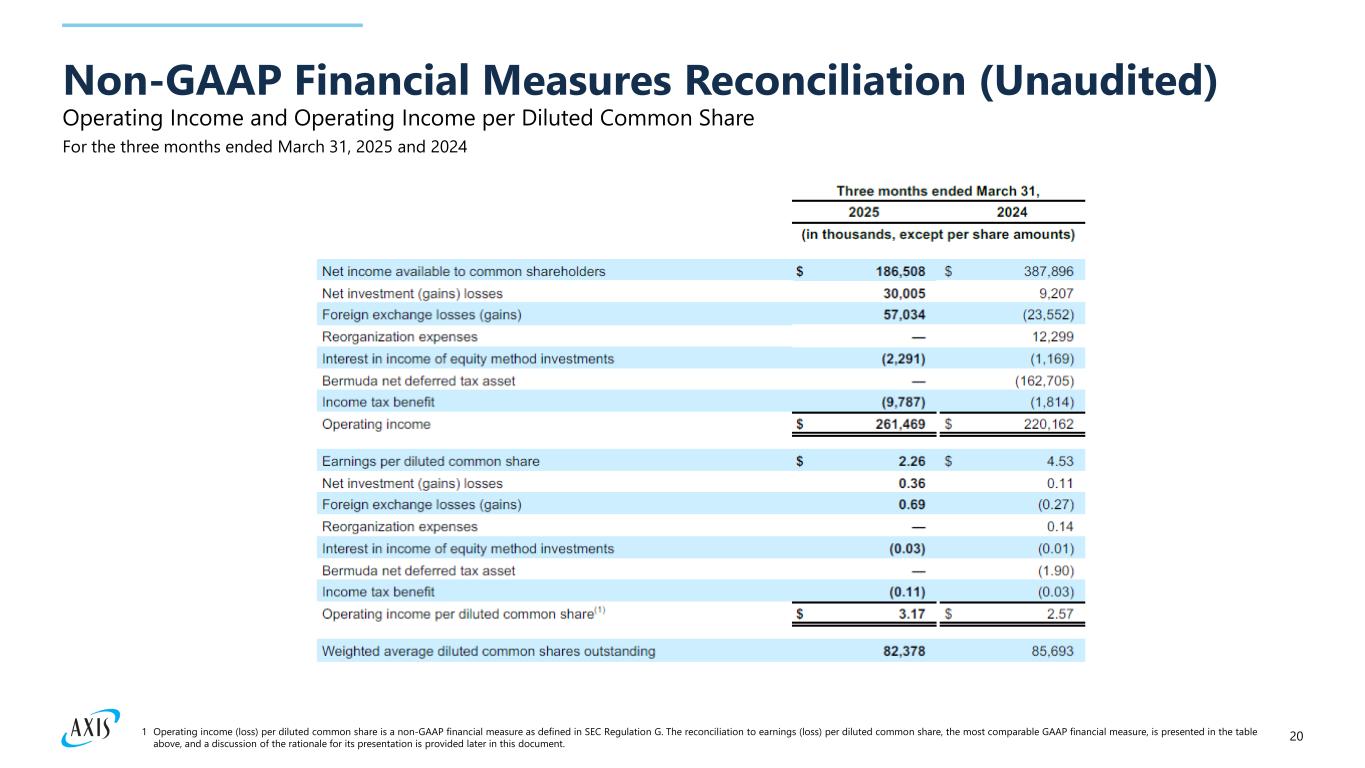
20 Operating Income and Operating Income per Diluted Common Share Non-GAAP Financial Measures Reconciliation (Unaudited) For the three months ended March 31, 2025 and 2024 1 Operating income (loss) per diluted common share is a non-GAAP financial measure as defined in SEC Regulation G. The reconciliation to earnings (loss) per diluted common share, the most comparable GAAP financial measure, is presented in the table above, and a discussion of the rationale for its presentation is provided later in this document.
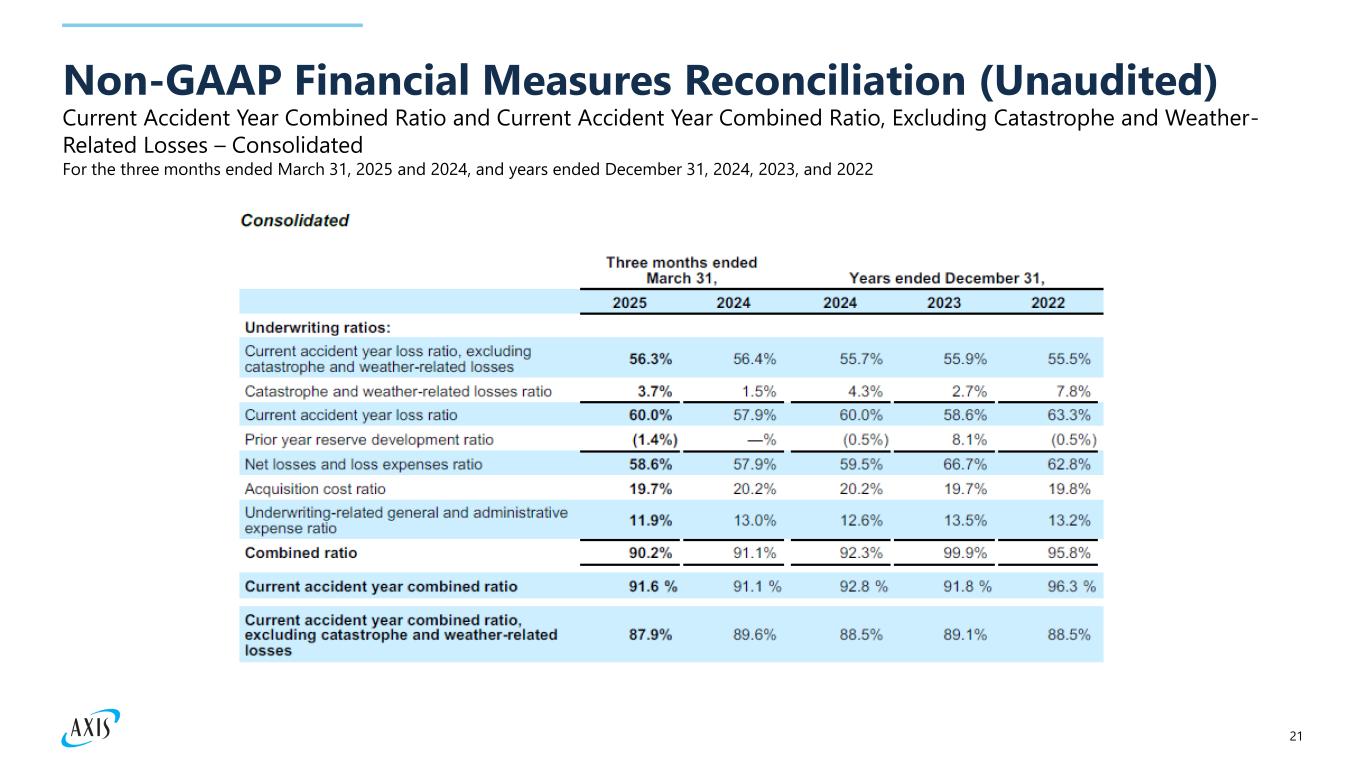
21 Current Accident Year Combined Ratio and Current Accident Year Combined Ratio, Excluding Catastrophe and Weather- Related Losses – Consolidated Non-GAAP Financial Measures Reconciliation (Unaudited) For the three months ended March 31, 2025 and 2024, and years ended December 31, 2024, 2023, and 2022
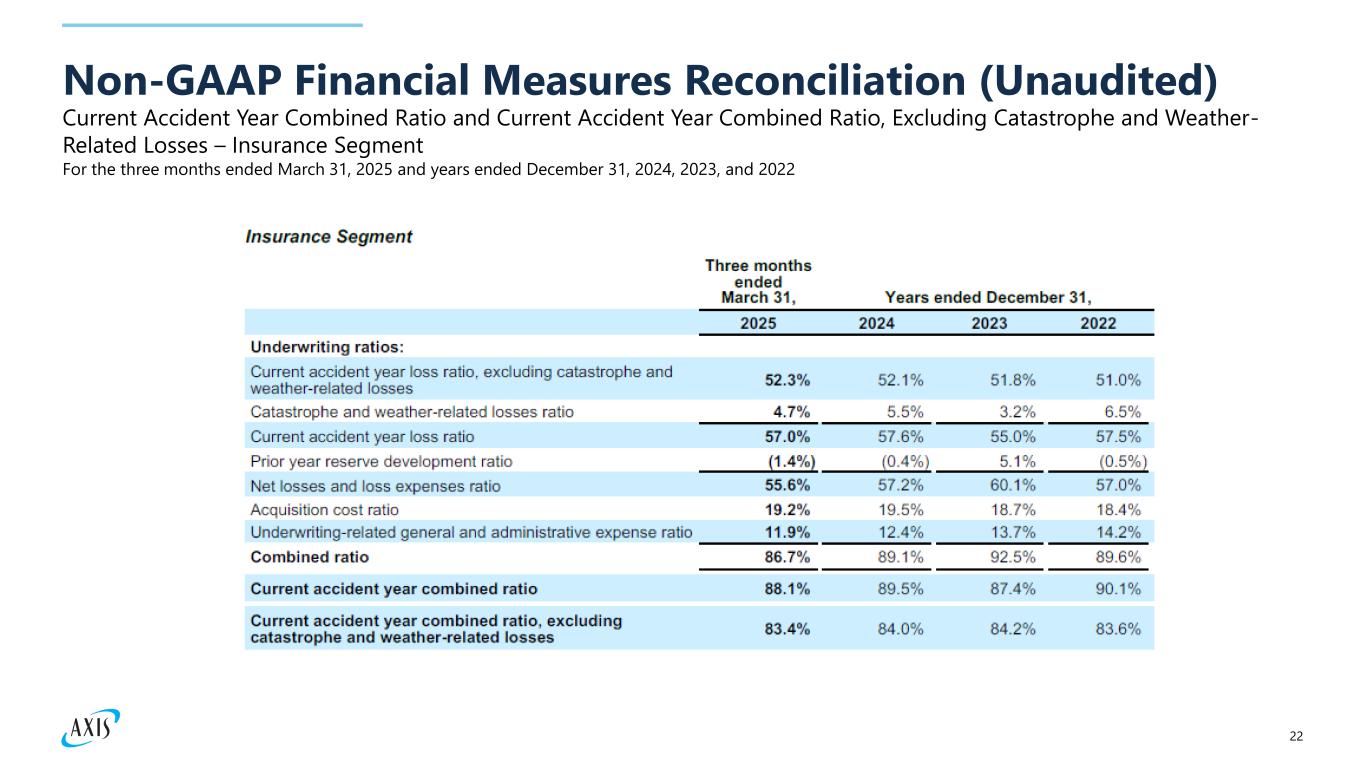
22 Current Accident Year Combined Ratio and Current Accident Year Combined Ratio, Excluding Catastrophe and Weather- Related Losses – Insurance Segment Non-GAAP Financial Measures Reconciliation (Unaudited) For the three months ended March 31, 2025 and years ended December 31, 2024, 2023, and 2022

23 Current Accident Year Combined Ratio and Current Accident Year Combined Ratio, Excluding Catastrophe and Weather- Related Losses – Reinsurance Segment Non-GAAP Financial Measures Reconciliation (Unaudited) For the three months ended March 31, 2025 and years ended December 31, 2024, 2023, and 2022
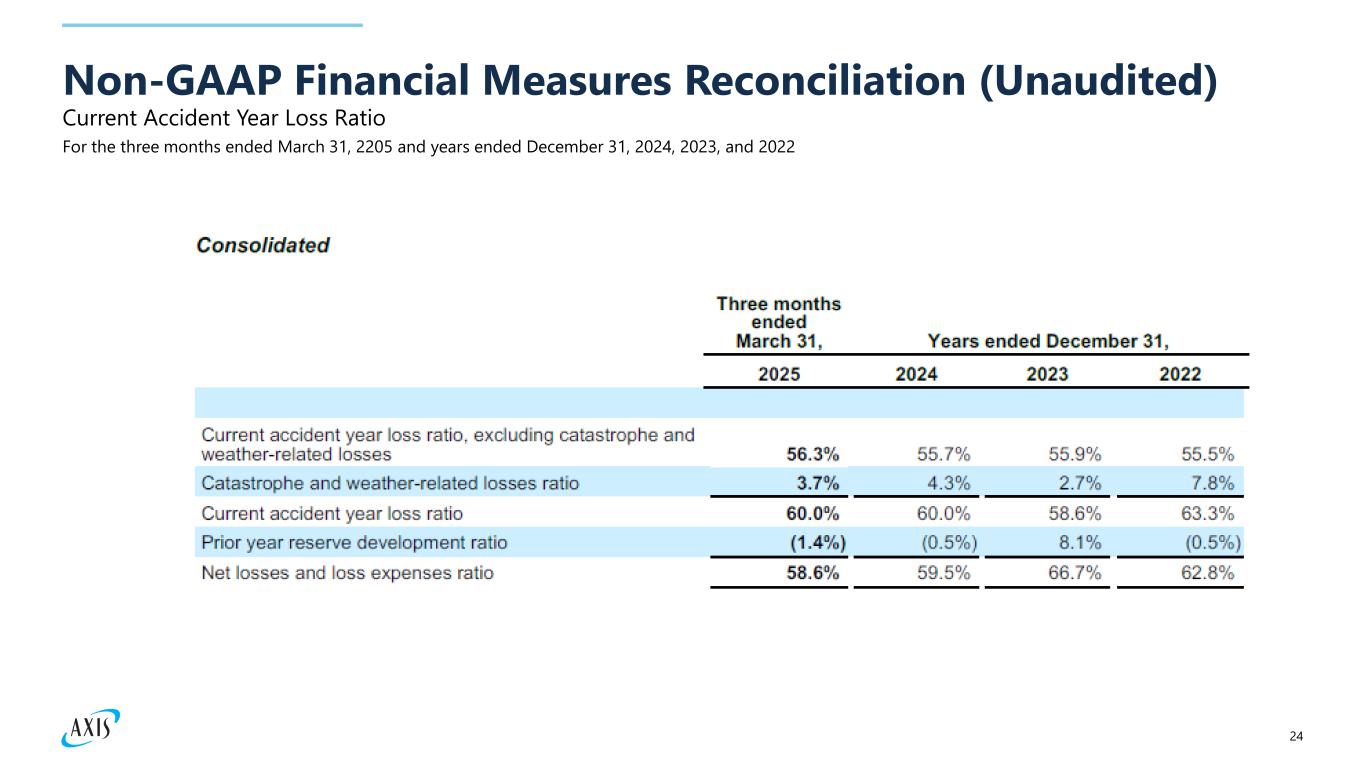
24 Current Accident Year Loss Ratio Non-GAAP Financial Measures Reconciliation (Unaudited) For the three months ended March 31, 2205 and years ended December 31, 2024, 2023, and 2022
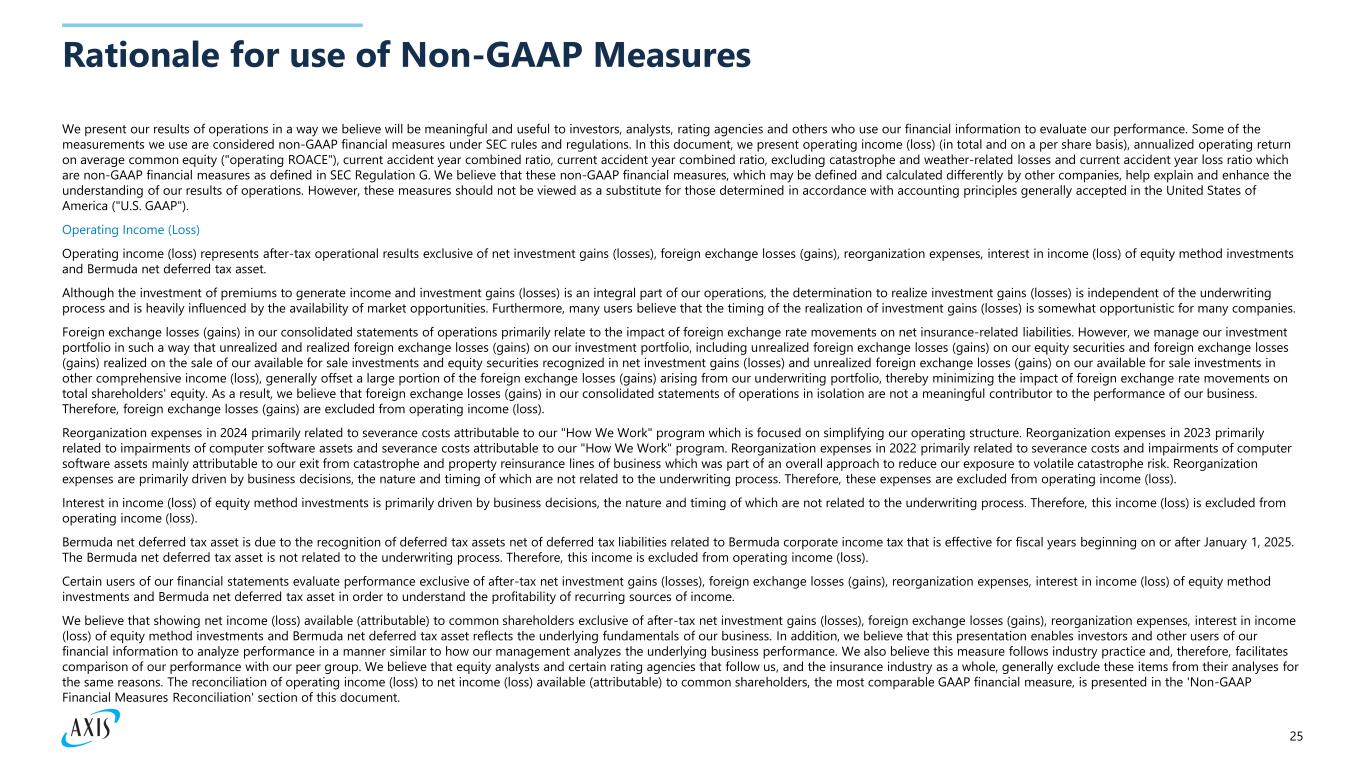
25 Rationale for use of Non-GAAP Measures We present our results of operations in a way we believe will be meaningful and useful to investors, analysts, rating agencies and others who use our financial information to evaluate our performance. Some of the measurements we use are considered non-GAAP financial measures under SEC rules and regulations. In this document, we present operating income (loss) (in total and on a per share basis), annualized operating return on average common equity ("operating ROACE"), current accident year combined ratio, current accident year combined ratio, excluding catastrophe and weather-related losses and current accident year loss ratio which are non-GAAP financial measures as defined in SEC Regulation G. We believe that these non-GAAP financial measures, which may be defined and calculated differently by other companies, help explain and enhance the understanding of our results of operations. However, these measures should not be viewed as a substitute for those determined in accordance with accounting principles generally accepted in the United States of America ("U.S. GAAP"). Operating Income (Loss) Operating income (loss) represents after-tax operational results exclusive of net investment gains (losses), foreign exchange losses (gains), reorganization expenses, interest in income (loss) of equity method investments and Bermuda net deferred tax asset. Although the investment of premiums to generate income and investment gains (losses) is an integral part of our operations, the determination to realize investment gains (losses) is independent of the underwriting process and is heavily influenced by the availability of market opportunities. Furthermore, many users believe that the timing of the realization of investment gains (losses) is somewhat opportunistic for many companies. Foreign exchange losses (gains) in our consolidated statements of operations primarily relate to the impact of foreign exchange rate movements on net insurance-related liabilities. However, we manage our investment portfolio in such a way that unrealized and realized foreign exchange losses (gains) on our investment portfolio, including unrealized foreign exchange losses (gains) on our equity securities and foreign exchange losses (gains) realized on the sale of our available for sale investments and equity securities recognized in net investment gains (losses) and unrealized foreign exchange losses (gains) on our available for sale investments in other comprehensive income (loss), generally offset a large portion of the foreign exchange losses (gains) arising from our underwriting portfolio, thereby minimizing the impact of foreign exchange rate movements on total shareholders' equity. As a result, we believe that foreign exchange losses (gains) in our consolidated statements of operations in isolation are not a meaningful contributor to the performance of our business. Therefore, foreign exchange losses (gains) are excluded from operating income (loss). Reorganization expenses in 2024 primarily related to severance costs attributable to our "How We Work" program which is focused on simplifying our operating structure. Reorganization expenses in 2023 primarily related to impairments of computer software assets and severance costs attributable to our "How We Work" program. Reorganization expenses in 2022 primarily related to severance costs and impairments of computer software assets mainly attributable to our exit from catastrophe and property reinsurance lines of business which was part of an overall approach to reduce our exposure to volatile catastrophe risk. Reorganization expenses are primarily driven by business decisions, the nature and timing of which are not related to the underwriting process. Therefore, these expenses are excluded from operating income (loss). Interest in income (loss) of equity method investments is primarily driven by business decisions, the nature and timing of which are not related to the underwriting process. Therefore, this income (loss) is excluded from operating income (loss). Bermuda net deferred tax asset is due to the recognition of deferred tax assets net of deferred tax liabilities related to Bermuda corporate income tax that is effective for fiscal years beginning on or after January 1, 2025. The Bermuda net deferred tax asset is not related to the underwriting process. Therefore, this income is excluded from operating income (loss). Certain users of our financial statements evaluate performance exclusive of after-tax net investment gains (losses), foreign exchange losses (gains), reorganization expenses, interest in income (loss) of equity method investments and Bermuda net deferred tax asset in order to understand the profitability of recurring sources of income. We believe that showing net income (loss) available (attributable) to common shareholders exclusive of after-tax net investment gains (losses), foreign exchange losses (gains), reorganization expenses, interest in income (loss) of equity method investments and Bermuda net deferred tax asset reflects the underlying fundamentals of our business. In addition, we believe that this presentation enables investors and other users of our financial information to analyze performance in a manner similar to how our management analyzes the underlying business performance. We also believe this measure follows industry practice and, therefore, facilitates comparison of our performance with our peer group. We believe that equity analysts and certain rating agencies that follow us, and the insurance industry as a whole, generally exclude these items from their analyses for the same reasons. The reconciliation of operating income (loss) to net income (loss) available (attributable) to common shareholders, the most comparable GAAP financial measure, is presented in the 'Non-GAAP Financial Measures Reconciliation' section of this document.
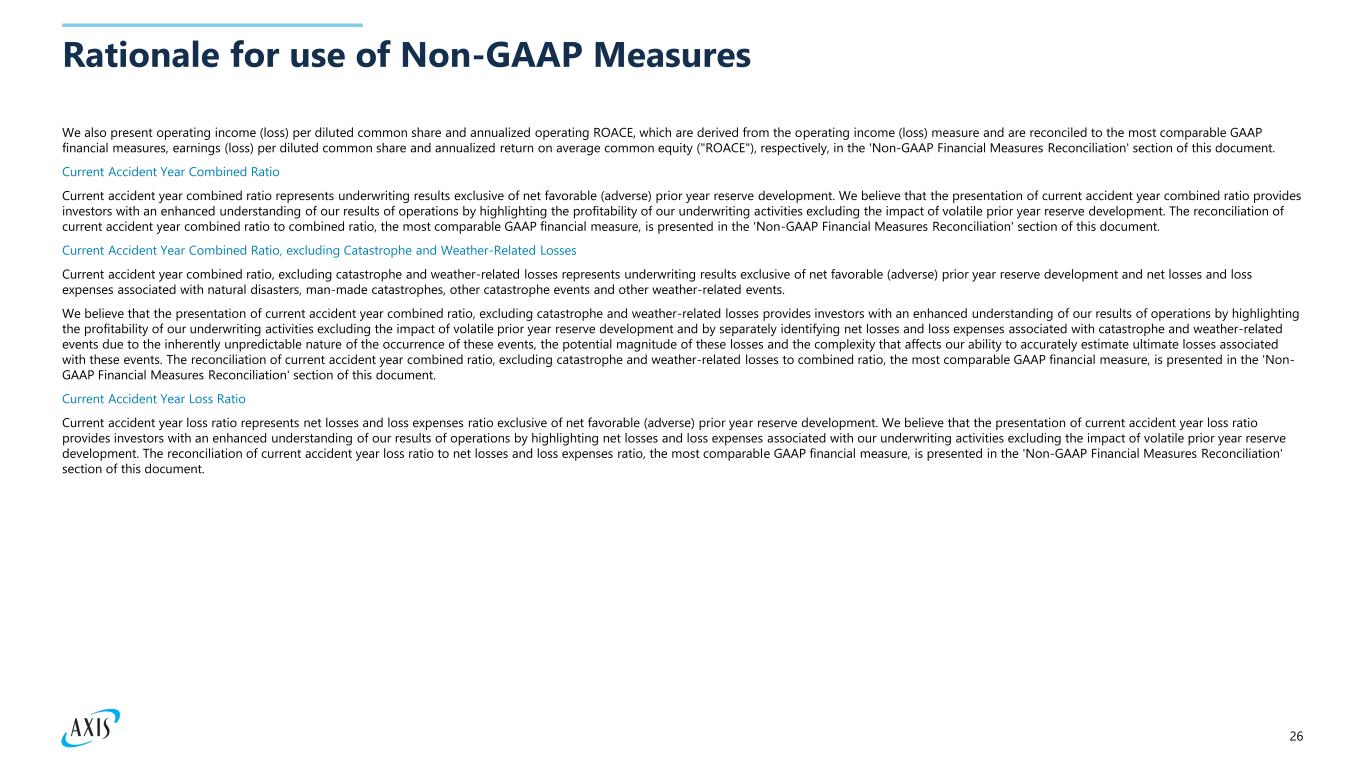
26 Rationale for use of Non-GAAP Measures We also present operating income (loss) per diluted common share and annualized operating ROACE, which are derived from the operating income (loss) measure and are reconciled to the most comparable GAAP financial measures, earnings (loss) per diluted common share and annualized return on average common equity ("ROACE"), respectively, in the 'Non-GAAP Financial Measures Reconciliation' section of this document. Current Accident Year Combined Ratio Current accident year combined ratio represents underwriting results exclusive of net favorable (adverse) prior year reserve development. We believe that the presentation of current accident year combined ratio provides investors with an enhanced understanding of our results of operations by highlighting the profitability of our underwriting activities excluding the impact of volatile prior year reserve development. The reconciliation of current accident year combined ratio to combined ratio, the most comparable GAAP financial measure, is presented in the 'Non-GAAP Financial Measures Reconciliation' section of this document. Current Accident Year Combined Ratio, excluding Catastrophe and Weather-Related Losses Current accident year combined ratio, excluding catastrophe and weather-related losses represents underwriting results exclusive of net favorable (adverse) prior year reserve development and net losses and loss expenses associated with natural disasters, man-made catastrophes, other catastrophe events and other weather-related events. We believe that the presentation of current accident year combined ratio, excluding catastrophe and weather-related losses provides investors with an enhanced understanding of our results of operations by highlighting the profitability of our underwriting activities excluding the impact of volatile prior year reserve development and by separately identifying net losses and loss expenses associated with catastrophe and weather-related events due to the inherently unpredictable nature of the occurrence of these events, the potential magnitude of these losses and the complexity that affects our ability to accurately estimate ultimate losses associated with these events. The reconciliation of current accident year combined ratio, excluding catastrophe and weather-related losses to combined ratio, the most comparable GAAP financial measure, is presented in the 'Non- GAAP Financial Measures Reconciliation' section of this document. Current Accident Year Loss Ratio Current accident year loss ratio represents net losses and loss expenses ratio exclusive of net favorable (adverse) prior year reserve development. We believe that the presentation of current accident year loss ratio provides investors with an enhanced understanding of our results of operations by highlighting net losses and loss expenses associated with our underwriting activities excluding the impact of volatile prior year reserve development. The reconciliation of current accident year loss ratio to net losses and loss expenses ratio, the most comparable GAAP financial measure, is presented in the 'Non-GAAP Financial Measures Reconciliation' section of this document.